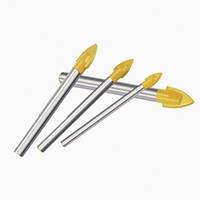loading...
- No. 9, Xingyuan South Street, Dongwaihuan Road, Zaoqiang County, Hengshui, Hebei, China
- admin@zjcomposites.com
- +86 15097380338
- Welcome to visit our website!
Cost of FRP Handrails for Your Next Project
Understanding the Pricing of FRP Handrails
In recent years, the demand for Fiber-Reinforced Plastic (FRP) handrails has significantly increased, owing to their durability, lightweight nature, and resistance to corrosion. As a result, the pricing of these handrails has become a focal point for architects, engineers, and project managers looking to integrate safe and effective safety solutions in both residential and industrial applications. This article aims to explore the factors influencing the price of FRP handrails and provide insights into how buyers can make informed purchasing decisions.
Factors Influencing FRP Handrail Prices
1. Material Composition The primary component of FRP handrails is the combination of fiberglass and resin. The quality of these materials can significantly impact the price. High-quality fiberglass tends to be more expensive but offers better durability and longevity. Furthermore, the type of resin used (such as polyester or vinylester) can affect cost, with vinylester being more suitable for high-performance applications, albeit at a higher price point.
2. Design and Customization FRP handrails come in a variety of designs and styles, which can also influence pricing. Custom designs or unique specifications will typically drive up costs due to the additional manufacturing processes involved. Off-the-shelf solutions are often more economical, but they may not meet specific aesthetic or functional requirements.
3. Length and Height The price is often calculated based on the linear foot, meaning the total length and height of the handrail system play a crucial role in determining total costs. Buyers need to measure the required installation area comprehensively to avoid unexpected expenses resulting from additional lengths required for proper coverage.
4. Installation Costs While purchasing the handrail itself is a significant part of the overall investment, installation costs should not be overlooked. Depending on the complexity of the installation and the location, professional installation can add to the total expense. Some manufacturers provide installation services, while others may recommend trusted contractors.
frp handrail price

5. Compliance and Safety Standards FRP handrails must adhere to specific safety standards and regulations, especially when used in commercial settings. Products that meet these standards may incur additional testing and certification costs, thereby affecting the price.
6. Market Demand and Supply Chain Factors Like any product, the pricing of FRP handrails can vary based on market dynamics. Fluctuations in material costs, shipping expenses, and availability can all influence final sale prices. Additionally, the increasing popularity of sustainable building materials can lead to higher demand for FRP solutions, impacting pricing.
Making Informed Purchasing Decisions
When considering the purchase of FRP handrails, it is crucial to weigh the initial investment against long-term benefits. Although the upfront cost may be higher compared to traditional materials like wood or metal, the advantages of FRP—including low maintenance requirements, resistance to environmental factors, and longevity—often justify the expense.
It's also advisable to compare quotes from multiple suppliers. This comparison should account for both the cost of the product and installation, as well as any additional features or customization options being offered. Customers should look for warranties and customer service options as these can provide peace of mind and protection for their investment.
Conclusion
In conclusion, while the price of FRP handrails can vary widely based on several factors, understanding these elements can empower buyers to make educated decisions. The durability and performance of FRP handrails can provide long-term savings, reducing the need for frequent replacements and maintenance. As safety remains a priority in construction and design, investing in high-quality FRP handrails can ensure both compliance and protection, making them a valuable addition to any project.
-
GRP Structures: The Future of Lightweight, High-Performance EngineeringNewsJun.20,2025
-
FRP Water Tank: High-Performance Storage for Corrosive and Clean Water SystemsNewsJun.20,2025
-
FRP Square Tube: The New Industry Standard for Chemical and Structural ApplicationsNewsJun.20,2025
-
FRP Pultruded Profiles: The Ultimate Choice for Lightweight Structural StrengthNewsJun.20,2025
-
FRP Handrails: The Safer, Smarter, and Stronger Choice for Modern InfrastructureNewsJun.20,2025
-
FRP Grating: The Smart Solution for Durable, Lightweight Industrial FlooringNewsJun.20,2025
-
Why Choose a Galvanized Water Tank for Your Storage NeedsNewsMay.21,2025
